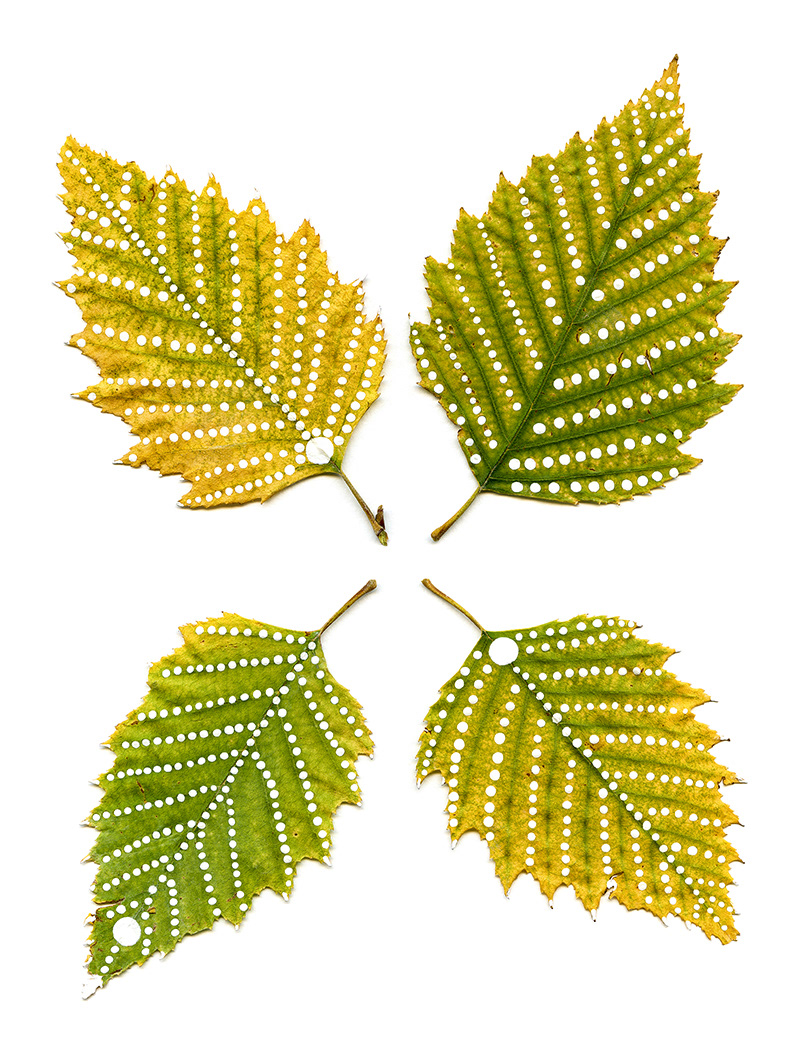
On my walks in late summer and early autumn, I collected leaves which had recently fallen, those that had transformed from their exhausted, faded green of late summer to fiery reds and oranges, mellow yellows, and crisp browns. I collected leaves that felt like smooth soft paper and still pliable. I placed the leaves between absorbent papers, then placed them into my thick, heavy books, stacking them one on top of the other to press and dry.
The leaves were beautiful even though not as perfect as when they were alive on the tree, but beautiful with a deeper value in their rich colors, along with some scars and tears. This project was to give these leaves a new stage in life.(1)
Over the last month and a half working on this project, I’ve had a wonderful time of creating, while hearing in the real world the daily reports of the thousands of American lives being taken by COVID-19 every day. As I dotted, creating patterns on the leaves, it felt as if each dot was beginning to represent a person’s death, a family's loss of a loved one, lives changed forever.
The leaves were beautiful even though not as perfect as when they were alive on the tree, but beautiful with a deeper value in their rich colors, along with some scars and tears. This project was to give these leaves a new stage in life.(1)
Over the last month and a half working on this project, I’ve had a wonderful time of creating, while hearing in the real world the daily reports of the thousands of American lives being taken by COVID-19 every day. As I dotted, creating patterns on the leaves, it felt as if each dot was beginning to represent a person’s death, a family's loss of a loved one, lives changed forever.
“Tears were dripping onto my dress, but I wasn't making any sound.
There was no sound to express this kind of pain. I didn't want to move, didn't want to do anything.
Fang was not waiting for me out in the living room. Tomorrow morning, when I woke up,
Fang would still be gone.”
― James Patterson, Fang
There was no sound to express this kind of pain. I didn't want to move, didn't want to do anything.
Fang was not waiting for me out in the living room. Tomorrow morning, when I woke up,
Fang would still be gone.”
― James Patterson, Fang
The Fallen Leaves project is in remembrance of Americans who lost their lives and for their families a promise for a new season, a hope for the future.
(1) Way back in the 16th century, pages in books were referred to as leaves. So turning over a new leaf meant that one was turning to a blank page. This idiom was used to signify a new stage in life.





















